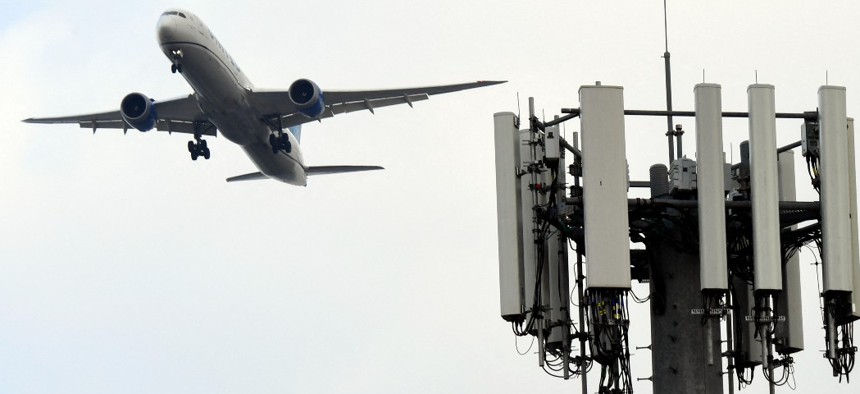Aviation Official: 5G and Air Travel Can 'Safely Coexist'

PATRICK T. FALLON/AFP via Getty Images
FAA Administrator Steve Dickson testified that improved information and new altimeters are two components of safeguarding air travel amid 5G C-band deployment.
The House Committee on Transportation and Infrastructure delved into the fraught 5G rollout that pitted prominent telecommunications companies against the federal government over the safety of C-band deployment in relation to air traffic.
Committee members focused on threading the needle between safety protocols and American competitiveness as 5G technology is deployed. The witness, Federal Aviation Administration Administrator Steve Dickson, discussed the security of 5G C-band network and its impact on radio frequency communications with airplane altimeters.
“5G and aviation can safely coexist,” Dickson testified. He further explained that he and Transportation Secretary Pete Buttigieg requested more recent data from telecommunications companies Verizon and AT&T surrounding transmitted locations, power levels and signal shape characteristics to inform safety assessments following over a year of preparation.
Stating that the FAA is in “a much better place” than in early January, Dickson said that wireless companies are not providing public agencies with detailed data that, until now, they have never submitted to the government.
Using this data, the FAA was able to determine which aircrafts and airport runways could handle safely landing flights with nearby 5G towers activated.
“Our analysis of the wireless company data has allowed us to target anticipated problem areas more precisely, reducing the impact of both industries,” he said. “Moving forward, we are also ready to work across the industry and with our federal partners on a more thoughtful, inclusive and collaborative approach to future spectrum policy and initiatives.”
Lawmakers pressed Dickson about the long term plans and implications of the FAA’s research and decisions on 5G rollouts. Rep. Garret Graves, R-La., was one of the committee members asking if the FAA had the bureaucratic bandwidth to ensure the same issues wouldn’t happen with forthcoming 6G and 7G rollouts.
Dickson said that while the FAA does have the internal resources to manage new network deployment, private industry partners are also critical.
“We have asked the telecommunications companies for longer line of sight on their deployments,” he said. He also noted that the FAA’s internal project management strategies, specifically waterfall training and change management, along with new data communications capabilities help address forthcoming challenges.
In response to Rep. Rick Larsen’s, D-Wash., question on the FAA approving safety conditions with 5G present in the national airspace, Dickson said the FAA is working on refining its safety model to better gauge where risks are acceptable or not.
“The ultimate solution, though, and I think you'll hear some about this…is the setting of new performance standards and airworthiness standards,” he said. Dickson continued to say that this is a long term solution. “The two industries [telecommunications and the FAA] look at risks very differently and processes very differently.”
Responding to Rep. Troy Balderson, R-Ohio, Dickson clarified that the FAA’s current flight safety model informs all stakeholders of buffer zones around airports where 5G won’t interfere with aircraft technology.
Accumulating new data on how 5G signals impact flights will also help the FAA understand and design performance requirements for manufacturing new C-band resistant radio altimeters and other flight equipment.
“These standard setting processes take time,” Dickson said. He further noted that in addition to airplane altimeters, the FAA is monitoring how helicopters interact with 5G frequencies, despite running on different technologies.
“We're working on alternate means of compliance for those types of operations for first responders and air ambulance type operations as well,” he said, adding that while a lot of the conversation has been around air carriers, the concerns of the whole aviation community must be addressed as well.
Moving forward, future spectrum deployments will likely hinge on cooperation between public and private entities.
“We just need to make sure that we're very coordinated as a federal government, but also that industries are able to share data and information with each other,” Dickson said.






